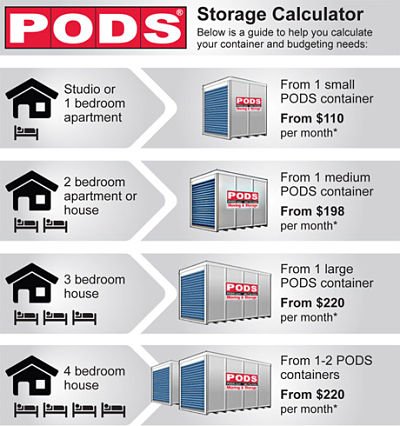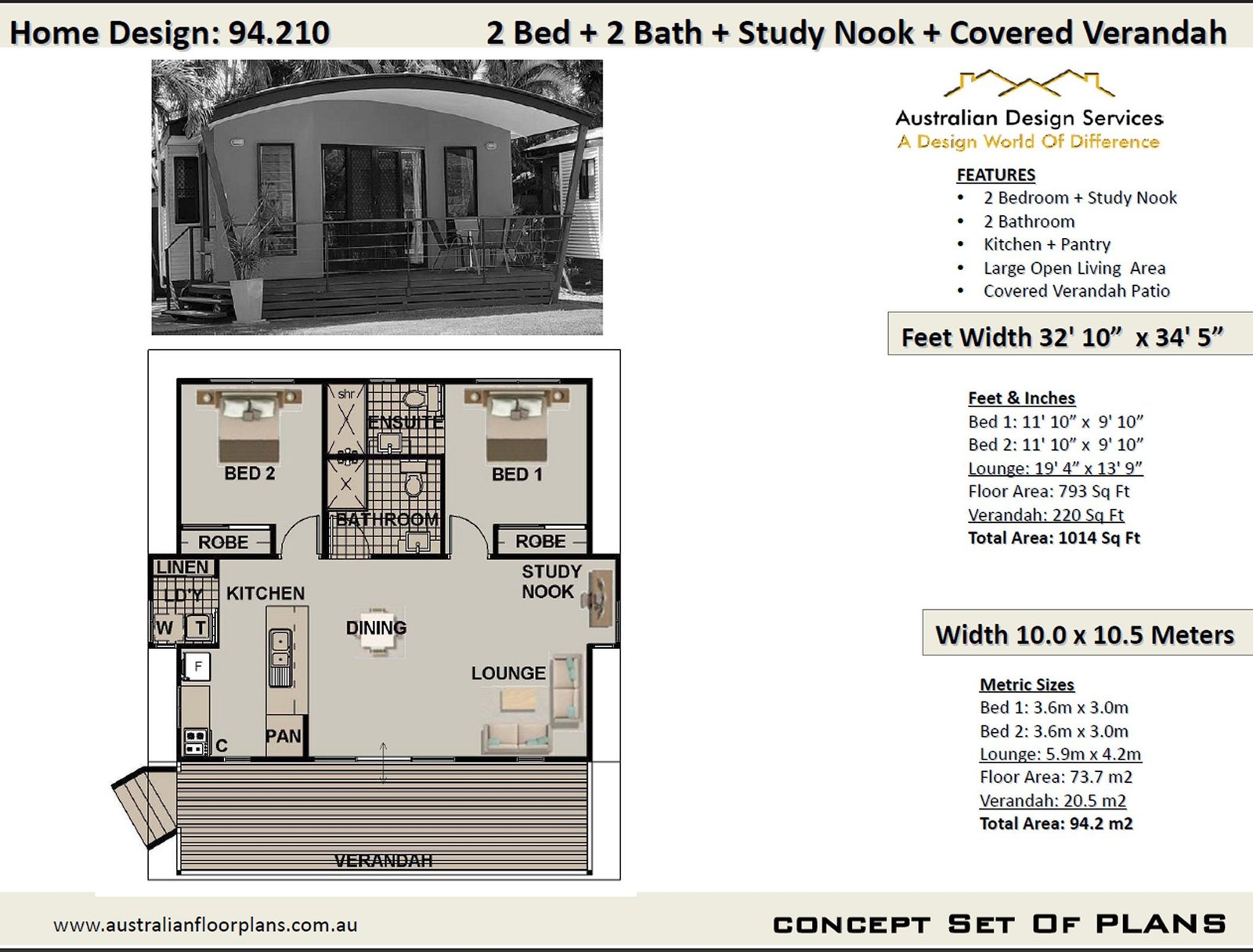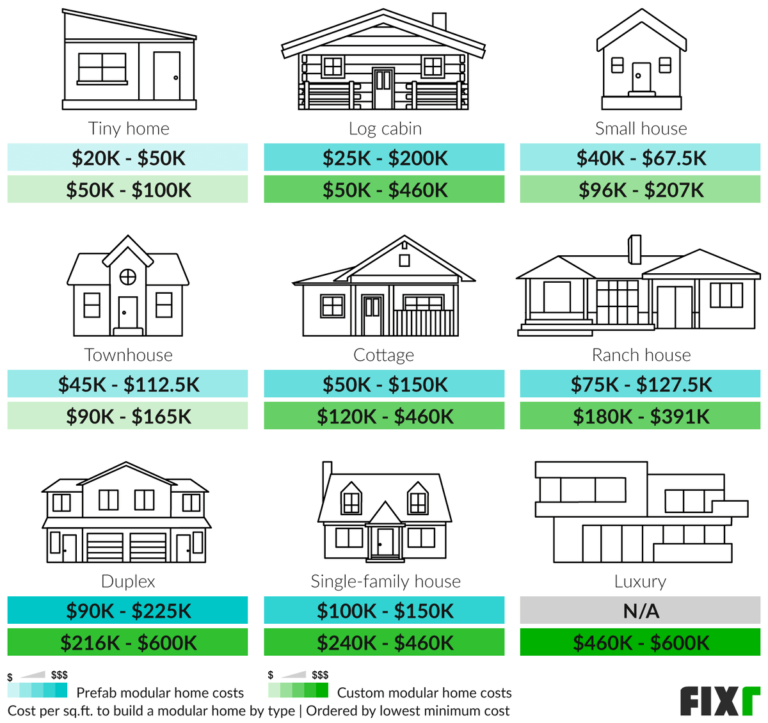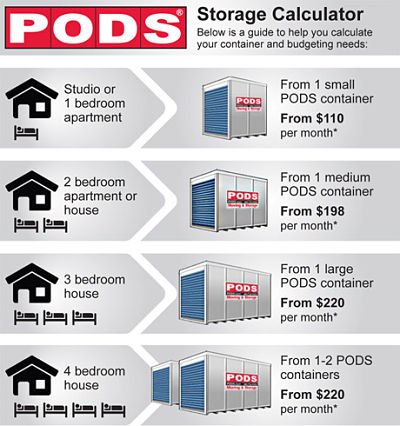How Many Pods for a 2 Bedroom House: Smart Packing Tips
You typically need one to two moving pods for a 2-bedroom house. The exact number depends on your belongings.
Moving to a new home can be both exciting and stressful. Proper planning ensures a smooth transition. Moving pods are a convenient solution for transporting your belongings. They provide flexibility in packing and are cost-effective. For a 2-bedroom house, estimating the number of pods required is crucial.
Assess your furniture, appliances, and personal items to determine the right size and quantity. Overloading a pod can lead to damage, while underloading means unnecessary expenses. Start by listing your inventory and consulting with moving pod providers. This ensures you choose the correct number of pods, making your move efficient and hassle-free.
Assessing Your Inventory
Before deciding how many pods you need for a 2-bedroom house, assess your inventory. This process involves understanding what items you have, their sizes, and how frequently you use them. Efficiently cataloging and identifying your belongings ensures a smoother moving experience.
Cataloging Items By Room
Begin by categorizing items room by room. This method helps you keep track of everything without missing a single object.
Living Room:
- Sofas
- Tables
- Chairs
- Entertainment units
Kitchen:
- Appliances (fridge, microwave, etc.)
- Cookware
- Utensils
- Pantry items
Bedrooms:
- Beds
- Dressers
- Nightstands
- Closet contents
Document each item along with its dimensions. This helps in estimating the space needed in the pods.
Identifying Seldom-used Objects
Next, identify seldom-used objects. These items can be packed first and stored efficiently.
Examples of seldom-used objects include:
- Seasonal decorations
- Old books and magazines
- Stored clothes
- Extra kitchen appliances
These items can occupy the corners of your pods, ensuring prime space for frequently used objects.
| Room | Frequently Used | Seldom Used |
|---|---|---|
| Living Room | Sofa, TV | Extra chairs, old DVDs |
| Kitchen | Fridge, stove | Bread maker, old utensils |
| Bedroom | Bed, current wardrobe | Seasonal clothes, extra bedding |
By cataloging items and identifying seldom-used objects, you make informed decisions about the number of pods needed. This step ensures a smoother and more organized move.
Choosing The Right Pod Size
Finding the right pod size for your 2 bedroom house is crucial. Too small, and you risk damaging your belongings. Too large, and you might waste money on unused space.
Comparing Pod Dimensions
Understanding different pod dimensions helps you choose the right size. Pods come in various sizes to fit your needs.
| Pod Size | Dimensions (L x W x H) | Space (Cubic Feet) |
|---|---|---|
| Small | 7′ x 7′ x 8′ | 385 |
| Medium | 12′ x 8′ x 8′ | 768 |
| Large | 16′ x 8′ x 8′ | 1024 |
Volume Calculations For Your Belongings
Estimate the volume of your belongings for an accurate pod size. Calculate each room’s content volume separately.
- Living Room: Sofa, coffee table, TV stand – about 250 cubic feet
- Bedroom 1: Bed, dresser, nightstand – about 150 cubic feet
- Bedroom 2: Bed, dresser, desk – about 180 cubic feet
- Kitchen: Appliances, table, chairs – about 200 cubic feet
Total estimated volume: 780 cubic feet.
Choose a medium pod for this volume. This ensures all items fit comfortably.
Packing Strategies For Efficiency
Packing up a 2-bedroom house can be challenging. Efficient packing strategies make it easier and quicker. Here, we’ll explore how to maximize pod space and protect delicate items.
Maximizing Space In Pods
Maximizing space in pods is crucial. Use every inch wisely. Follow these tips:
- Use uniform boxes: Similar-sized boxes stack well.
- Disassemble furniture: Smaller pieces save space.
- Fill empty spaces: Use soft items like pillows.
- Heavy items on the bottom: Distribute weight evenly.
Here’s a table to help you visualize:
| Item | Action |
|---|---|
| Books | Pack in small boxes |
| Clothing | Use vacuum bags |
| Sofas | Disassemble if possible |
| Electronics | Use original boxes |
Protective Packing For Delicate Items
Protecting delicate items is important. These items need extra care. Follow these steps:
- Wrap each item: Use bubble wrap or paper.
- Use sturdy boxes: Delicate items need strong boxes.
- Label boxes: Write “Fragile” clearly.
- Pack tightly: Prevent movement inside the box.
By following these strategies, you can pack efficiently and safely. Always plan and organize your packing process.
Furniture Disassembly Tips
Disassembling furniture can save space and make moving easier. Knowing the right tips helps. Here’s how to disassemble furniture efficiently for your 2-bedroom house move.
Breaking Down Large Pieces
Large furniture can be challenging to move as one piece. Start by removing cushions and detachable parts. Use the right tools like screwdrivers and wrenches. Label each part to avoid confusion later. Use plastic bags to store screws and small parts. Wrap each disassembled piece in moving blankets for protection.
Keeping Track Of Hardware And Components
Organize your hardware to prevent loss. Use small bags or containers. Label each bag with the furniture piece it belongs to. Create an inventory list to track all components. You can use a table to list parts and their locations:
| Furniture Piece | Hardware/Components | Storage Bag Label |
|---|---|---|
| Bed Frame | Screws, bolts, nuts | Bed Frame – Bag 1 |
| Dining Table | Screws, legs | Dining Table – Bag 2 |
Use numbered labels for parts that fit together. This makes reassembly much easier. Keep all bags in a designated box or container. Mark this box clearly.
Follow these tips to make your move smoother and less stressful. Organized disassembly helps in efficient packing and easy reassembly.
Seasonal Items And Clothing
Seasonal items and clothing can take up significant space in a home. Storing these items properly ensures more room for daily essentials. This section will guide you on how to manage these items effectively.
Storing Off-season Apparel
Off-season apparel, like winter coats and summer dresses, can clutter closets. Use vacuum-sealed bags to save space. These bags compress clothing, making it easier to store.
Label each bag clearly. This helps find items quickly when the season changes. You can use transparent bins too. These bins protect clothes from dust and pests.
Consider using a storage unit for bulkier items. This keeps your home organized and clutter-free.
Packing Holiday Decorations
Holiday decorations need careful packing to avoid damage. Use sturdy boxes for fragile items. Wrap delicate ornaments in bubble wrap or tissue paper.
Label each box with the holiday name. This saves time when decorating next year. Store these boxes in a cool, dry place to prevent damage.
For string lights, wrap them around a piece of cardboard. This prevents tangling and makes them easy to use next season.
| Item | Storage Solution |
|---|---|
| Winter Coats | Vacuum-Sealed Bags |
| Summer Dresses | Transparent Bins |
| Fragile Ornaments | Sturdy Boxes with Bubble Wrap |
| String Lights | Wrapped Around Cardboard |
- Label all storage containers clearly.
- Use vacuum-sealed bags for clothes.
- Store delicate items in sturdy boxes.
- Keep string lights tangle-free with cardboard.
These tips will help keep your 2-bedroom house organized throughout the year.
Electronics And Appliances
Moving a 2 bedroom house involves many considerations. One key area is packing and storing electronics and appliances. These items require special attention to ensure safe transport and storage.
Securing Electronics For Transport
Electronics are delicate and need careful handling. Start by removing all batteries. This prevents leakage during the move.
- Use original boxes for packing. If unavailable, choose sturdy, cushioned boxes.
- Wrap each item in bubble wrap. Seal with tape to secure.
- Label each box with “Fragile” and the contents inside.
- Place heavier items at the bottom. Lighter items go on top.
Ensure cords and accessories are packed together. Use zip-lock bags for this purpose. Label each bag to avoid confusion later.
Preparing Appliances For Storage
Appliances need special steps before storage. Clean each appliance thoroughly to avoid mold or odors.
- Defrost refrigerators and freezers at least 24 hours before packing.
- Drain washing machines and dishwashers completely.
- Secure doors and lids with tape or rope.
- Use moving blankets to protect surfaces from scratches.
Wrap cords around the appliances. Secure them with tape to prevent tripping.
Here’s a quick reference table for packing electronics and appliances:
| Item | Preparation Step | Packing Material |
|---|---|---|
| TV | Remove stand, wrap in bubble wrap | Original box or cushioned box |
| Laptop | Remove battery, wrap in bubble wrap | Laptop bag or cushioned box |
| Refrigerator | Defrost, clean, secure doors | Moving blankets |
| Washing Machine | Drain water, secure drum | Moving blankets |
Labeling For Unpacking Ease
Labeling your moving boxes makes unpacking easier and faster. Proper labeling ensures each box goes to the right room. This reduces confusion and stress.
Creating An Inventory List
Start by creating an inventory list of all items. This list helps track everything during the move. Use a notebook or a digital app for convenience.
- Write down each item’s name and description.
- Group items by room: living room, kitchen, bedrooms.
- Assign a number to each box and note it on the list.
With an inventory list, you know exactly what’s in each box. This prevents losing items during the move.
Color-coding Boxes By Room
Color-coding boxes simplifies the unpacking process. Assign a unique color to each room.
| Room | Color |
|---|---|
| Living Room | Red |
| Kitchen | Blue |
| Bedroom 1 | Green |
| Bedroom 2 | Yellow |
Use colored markers or stickers to mark each box. This visual system helps movers know where each box belongs.
Labeling boxes with room names and contents improves organization. For example:
- Green: Bedroom 1 – Clothes
- Blue: Kitchen – Pots and Pans
- Red: Living Room – Books
With these methods, unpacking becomes less chaotic. You can easily find and place items in their new home.

Credit: www.easystoragesearch.com
Load Distribution Within The Pod
Moving a 2 bedroom house using pods requires careful planning. Proper load distribution ensures safe transport and easy access. Let’s explore how to balance weight and strategize placement within the pod.
Balancing Weight For Safe Transport
Ensure the pod’s weight is evenly distributed. This prevents damage and accidents.
- Place heavy items on the bottom.
- Spread weight evenly side to side.
- Keep heavy items close to the pod’s center.
- Use padding for fragile items.
Strategizing Placement For Access
Pack items strategically for easy access. This helps in both loading and unloading.
- Place items you need first at the front.
- Store less-used items at the back.
- Label boxes clearly.
- Create a checklist for quick unloading.
Insurance And Liability Considerations
Moving involves risks. Protecting your belongings with the right insurance is crucial. This section dives into the essential aspects of insurance and liability when using moving pods.
Understanding Pod Coverage Options
Before choosing a pod service, understand the coverage options. Some companies offer basic protection. It usually covers minimal damage. Others provide comprehensive plans. These cover a wide range of incidents.
Consider the value of your items. High-value items need better coverage. Make sure the plan fits your needs. Always read the fine print. Know what is included and excluded.
Here are some common coverage options:
- Basic Coverage: Often included for free. Limited protection.
- Comprehensive Coverage: Higher cost. Extensive protection.
- Third-Party Insurance: Buy separately. Customizable plans.
Documenting Item Conditions Pre-move
Documenting your items’ conditions is vital. It helps during claims. Take clear photos of all items. Make a detailed inventory list.
Follow these steps for proper documentation:
- Photograph Items: Capture multiple angles. Focus on existing damage.
- List Items: Write down each item. Note their condition.
- Store Proofs: Keep photos and lists safe. Use cloud storage for backup.
Proper documentation speeds up the claims process. It also reduces disputes. Being thorough protects your interests.

Credit: www.etsy.com
Timeline Planning For Pod Rental
Planning the timeline for renting a pod is crucial. This ensures a smooth move for your 2-bedroom house. Proper planning helps avoid last-minute chaos. Let’s break it down into simple steps.
Scheduling Delivery And Pickup
First, decide on the delivery date. Schedule it at least a week before moving. This gives you ample time to pack.
Next, plan the pickup date. Allow enough time for packing and loading. Usually, three days are enough for a 2-bedroom house.
Here’s a simple table for reference:
| Task | Recommended Days |
|---|---|
| Pod Delivery | 7 days before move |
| Packing and Loading | 3 days |
| Pod Pickup | On moving day |
Allocating Time For Packing And Unpacking
Break down the packing process into manageable tasks. Pack one room per day. Start with the least used rooms first.
Use an ordered list to keep track:
- Day 1: Pack guest bedroom.
- Day 2: Pack kitchen items.
- Day 3: Pack living room items.
Unpacking is equally important. Unpack essentials first. This includes kitchen items, toiletries, and bedding. Here’s a quick checklist:
- Day 1: Unpack kitchen and bathroom essentials.
- Day 2: Unpack bedroom items.
- Day 3: Unpack living room items.
Planning your timeline ensures a hassle-free moving experience. Follow these steps for a smooth transition.

Credit: www.booking.com
Frequently Asked Questions
How Many Pods Do I Need For My House?
You typically need one PODS container for a 600-square-foot space. For larger homes, multiple containers may be necessary.
How Many Pods For A 3,000 Sq Ft House?
For a 3,000 sq ft house, you typically need 2 to 3 PODS containers. The exact number depends on your belongings.
How Many Rooms Does A 16 Pod Hold?
A 16 pod typically holds 16 rooms. Each pod equals one room, ensuring precise accommodation.
What Size Pod For A 3-bedroom House?
A 16-foot POD is ideal for a 3-bedroom house. It offers enough space for furniture and household items.
Conclusion
Choosing the right number of pods for a 2-bedroom house is crucial. Consider your space and storage needs. Evaluate the size of your furniture and belongings. A well-organized move can save time and stress. Proper planning ensures a smooth transition.
Make your move hassle-free by selecting the appropriate number of pods.





